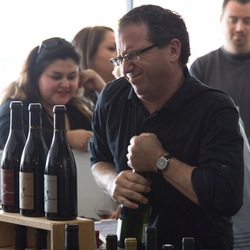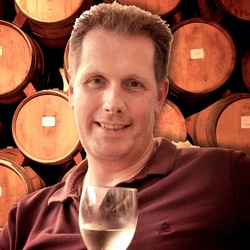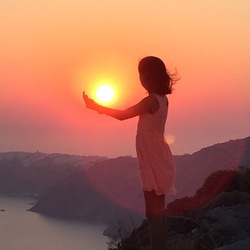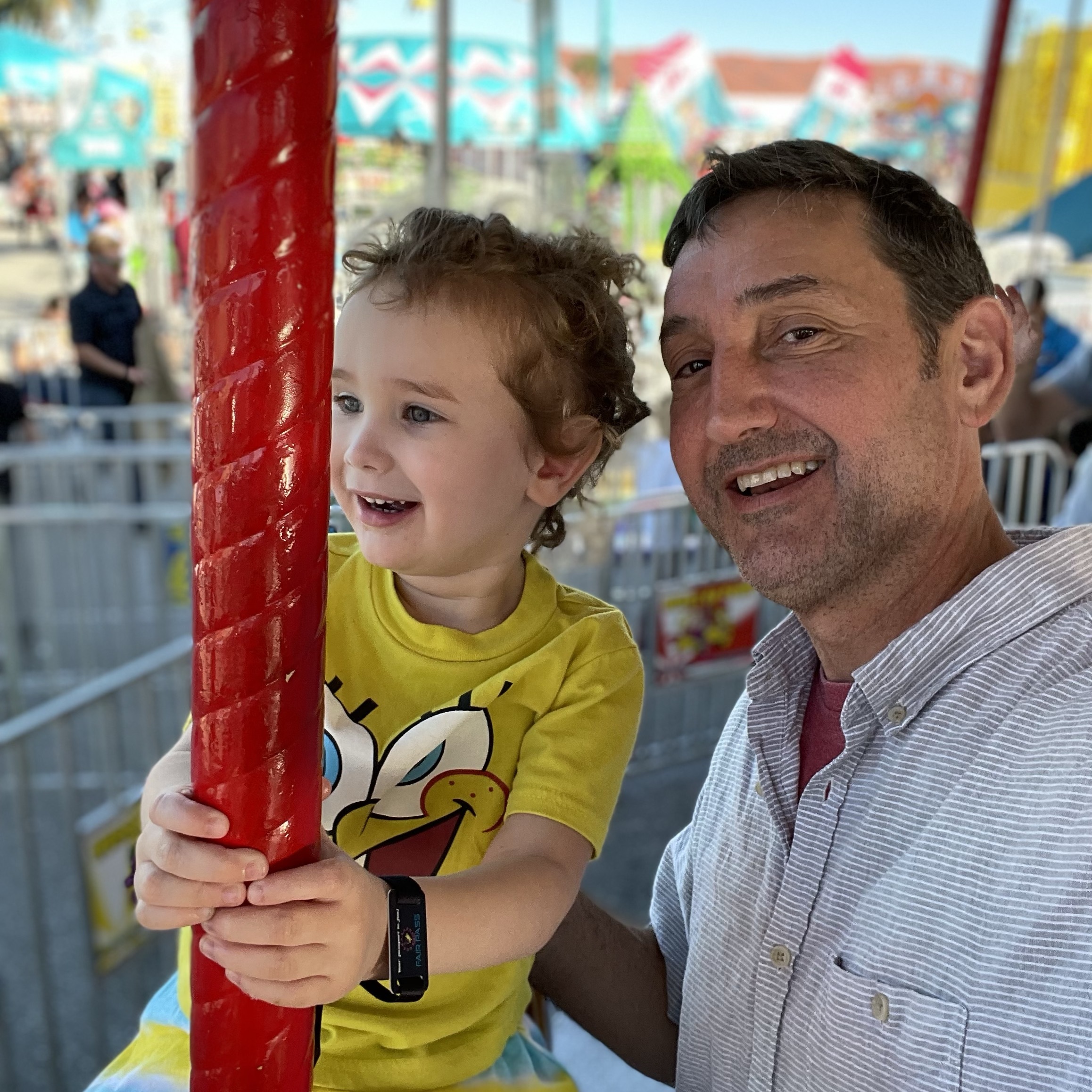St. John's Road
Château Pipeau
St. Émilion Grand Cru Red Bordeaux Blend 2005
Château Brane-Cantenac
Grand Cru Classé en 1855 Margaux Red Bordeaux Blend 2005
I have a six-pack of this 05. I thought after 10 years in bottle, it would be interesting to check in on its evolution. While tasty, I’ll wait another 8-10 to open another. Even after 2-3 hours in the decanter, it’s still a very young adolescent. On the nose, slightly sour blackberries & dark cherries, dark currants, baked black plum, haunting blue fruits, anise, whiff of spice, steeped tea, dry stones, dry crushed rocks with dry top soil, caramel, vanilla with fresh & dry red florals. The body is thick & full. Tannins are starting to round out. It’s velvety on the palate. The fruits are; bright, fresh & ripe and really show the greatness of the 05 vintage. Dark currants, blackberries, dark cherries, baked black plum, haunting blue fruits, baked strawberries, cherries, raspberries on the long set, dark spice, clay & loamy dry top soil with crushed rocks, dry stones, cigar with ash, graphite, dry stems, slight herbaceous character, mint, used leather, clove, caramel, vanilla, fresh & dry red florals with violets. The round acidity is about perfect. The structure and length are still strong. The balance is in harmony. As for the long finish, it’s lush, ruby, rich and well polished. Photos of; Chateau Brane Cantenac, large wood vats, Henri Lurton and Estate vines. Producer notes and history...Chateau Brane Cantenac began in the early 17th century. At the time, the estate was known as Domaine Guilhem Hosten. Even that far back, wine was produced from the property. In fact, the wine was so highly regarded it was one of the more expensive wines in Bordeaux. It sold for almost as much money as Brane Mouton. This is interesting because of who went on to buy the vineyard in the 1800’s. The Baron of Brane, also known as “Napoleon of the Vineyards”, purchased the Chateau in 1833. At the time of the sale, the estate was called Chateau Gorce-Guy. To get the funds needed to purchase the Margaux vineyard, the Baron sold what is now called Mouton Rothschild, which was at the time of the sale, known as Chateau Brane-Mouton. Not such a good move with hundreds of years in hindsight! In 1838, the Baron renamed property taking his name and the name of the sector where the vineyards were located and called it Chateau Brane Cantenac. The Chateau later passed to the Roy family, who were well-known in the Margaux appellation in those days, as they owned Chateau d’issan. Moving ahead to 1920, the Societe des Grands Crus de France, a group of merchants and growers that owned several chateaux located in the Medoc including; Chateau Margaux, Chateau Giscours, and Chateau Lagrange in St. Julien, purchased Chateau Brane Cantenac. Five years later, M. Recapet and his son-in-law, François Lurton, took over Brane Cantenac along with Chateau Margaux. Lucien Lurton (the son of François Lurton) inherited Brane Cantenac in 1956. Today, the estate is still in the hands of the Lurton family. Brane Cantenac is owned and run by Henri Lurton. After being given the responsibility of managing Brane Cantenac, it was under the direction of Henri Lurton that large portions of the vineyard were replanted. Vine densities were increased, the drainage systems were improved and the plantings were also, slowly changed. The vineyard of Brane Cantenac is planted to 55% Cabernet Sauvignon, 40% Merlot, 4.5% Cabernet Franc and .5% Carmenere. Carmenere was used for the first time in the 2011 vintage. The only other Chateau I know that still uses Carmenere is Clerc Milon. The 75 hectare Left Bank vineyard of Brane Cantenac is essentially unchanged since it earned Second Growth status in the 1855 Classification. At least that is the case with the 45 hectares used to produce the Grand Vin of Brane Cantenac. Those 45 hectares are planted surrounding the Chateau. Those vines are located just in front of the Cantenac plateau and are the best terroir that Brane Cantenac owns. They have other parcels, which are further inland and much of those grapes are placed into their second wine, Le Baron de Brane. Those additional hectares can be divided into 3 main sections. Behind the Chateau, they have 15 hectares of vines on gravel and sand, 10 hectares across the road with sand, gravel and iron and a 13 hectare parcel with gravel called Notton, which is used for their second wine. The vineyard is planted to a vine density that ranges from 6,666 vines per hectare on the plateau and up to 8,000 vines per hectare for the vines located behind chateau, in their sandier soils. The higher levels of vine density are always found in the newer plantings. The terroir of Brane Cantenac consists of deep gravel, sand and clay soil. Experiments in the vineyards are currently looking at becoming more organic in their vineyard management. Today, more than 25% of Brane Cantenac is farmed using organic farming techniques. It is expected that over time, the amount of hectares farmed with organic methods will be increased. Brane Cantenac has gone through 2 relatively recent modernization’s in 1999, when they added began adding the first of their smaller vats to allow for parcel by parcel vinification and then again in 2015 when they completed a much more complete renovation of their cellars and vat rooms. While Brane Cantenac is a traditional producer, they are no stranger to technology as they were one of the first estates to embrace optical grape sorting machines. In very wet vintages, they can also use reverse osmosis. To produce the wine of Chateau Brane Cantenac, the wine is vinified in a combination of temperature controlled, traditional, 22 oak vats, 18 concrete tanks and 20 stainless steel vats that vary in size from 40 hectoliters all the way up to 200 hectoliters, which allows for parcel by parcel vinification. 40% of the fermentation takes place in the oak vats. The oldest vines are vinified in vats that are selected to allow for separate parcel by parcel vinification. The younger vines are vinified more often together in the same vats. However, the Carmenere is entirely micro-vinified, meaning that those grapes were completely vinified in barrel, using micro-vinification techniques. This can also happen because the amount of grapes produced is so small. Some vats can be co-inoculated, meaning they go through alcoholic fermentation and malolactic fermentation simultaneously. At Chateau Brane Cantenac, malolactic fermentation takes place in a combination of French oak tanks and barrels. The wine of Brane Cantenac is aged in an average of 60% new, French oak barrels for 18 months before bottling. The initial 2 months of aging is done with the wine on its lees, which adds more depth to the wine. There second wine is Le Baron de Brane. Le Baron de Brane is not new. In fact, previously, the second wine went under the name of Chateau Notton, which took its name from one of the main parcels where the grapes were planted. During the late 1950’s and into the 1960’s, having a second wine was important as the estate declassified 3 vintages, due to extremely poor, weather conditions in 1956, 1960 and 1963. Production of Chateau Brane Cantenac is about 11,000 cases per year. — 8 years ago

Château Léoville Barton
Saint-Julien Red Bordeaux Blend 1996
Smoke, rocks, stones, graphite and dark fruits on the nose. As with all of Barton's wine, the mouthfeel is impeccable. Not heavy, nor sweet, just right. Ethereal texture. Supple tannins, finishing with sage, leather, spice and a hint of road tar. I know it reads like muck, but this is the stuff of kings and queens.
12.5% abv and a predominantly cab blend. — 9 years ago


😏

St. John's Road
Blood & Courage Barossa Valley Shiraz 2014
Awesome drop and on a deal at BWS too ;-) — 10 years ago
Château de la Maltroye
Clos du Château de la Maltroye Chassagne-Montrachet 1er Cru Chardonnay 2012
It's been a while since I went down the road of the Chassagne. Mostly sort time in St Aubin and Puligny. But I have to say, Chassagne is still very much special. Lots of depth, long in mouth, mineral and oxidized — 10 years ago
Spottswoode
Family Estate Grown St. Helena Cabernet Sauvignon 2007
Awesome pure Cabernet with years of time to enjoy down the road! — 10 years ago
Château Cantenac
St. Émilion Grand Cru Red Bordeaux Blend 2014
Back in the US so here is my last review from my trip to 🇫🇷. Found on the side of the road at an unassuming low key Chateaux/tasting room close to Saint Emilion no reservations needed - the wines were pretty good - I liked them all but the basic 2014 Cantenac was really well done. 13.5% a ton of acid which already precipitated out. An enjoyable classic Bordeaux. Mostly dark berry flavors well done. — 7 years ago
Behrens Family Winery
The Road Les Traveled III St. Helena Red Blend
NV wine from Behrens Family Winery. Love this producer for making some seriously deep and complex wines that have just about anything to complement anything! This wine is massive, and ready to go! Fruit forward but not a jam bomb. Nice chalky and still youthful and expressive blackberry fruit. This one shows complexity from the middle to the finish where a toasted oak and chocolate mocha note kind of kick in. Really good with dinner but huge with dessert. If this isn't my one and only Erna Schein left, it's close! Very nice wine!! — 8 years ago

Domaine Jean-Louis Chave
Saint-Joseph Syrah 2003
Nose is more on the fruit than the spice. Nice aromas of blackberry, black cherry and plum fruit. Hints of graphite, road tar and soy. Ripe lush fruit tannins in palate. Lacks a touch of brightness on mid palate due to vintage. Ready to drink and fantastic with braised lamb shoulder. — 9 years ago
Road 13 Vineyards
Honest John's British Columbia Rosé Blend 2015
Perfect summer rosé — 9 years ago
Eden Road
The Long Road Shiraz 2012
So, grow at high elevation, pick a little earlier and lose the new oak - that's Shiraz that hits my sweet spot. Quiet but elegant, restrained but offering intriguing depth, and closer to St. Joseph than Barossa. Wish there were more Aussie imports like this. — 9 years ago



Château Montrose
Saint-Estèphe Cabernet Sauvignon Blend 2005
A precious gem that still has a long long road ahead of it. Very rich, better: exuberant ! A true keep, for at least another 10 years. — 10 years ago
St. Julian Winery
Reserve Braganini Mountain Road Riesling 2014
2014 mountain road riesling , st julian winery, michigan, usa.
This is a wonderful semi-dry riesling with citrus, peach, and tropical notes. Great for a day outside. One of my fav's when ate with a complementary meal, something with a spice preferably. — 10 years ago
Colgin Cellars
Cariad Napa Valley Red Blend 2010
Start by saying this needs more time and could def see it approaching perfection if it ages well. Big captivating nose of blackberries, warm road tar, and hints of violet. Palate bursts forth with smokey ember notes juxtaposition against ripe plums and dark berries. Napa meets st Emilion. The finish is a touch too tannic right now as it masks what will surely be more nuance that currently appear a full minute after sipping. Special wine it will prob be better in 2 + years. — 10 years ago


Château Cos d'Estournel
Saint-Estèphe Red Bordeaux Blend 1996
this is so youthful... lots of tannins has a long road ahead — 11 years ago
Creekside Estate Winery
Queenston Road Vineyard Reserve Cabernet Sauvignon 2013
100% aged in French oaked — 8 years ago
Domaine Fourrier
Clos Solon Vieille Vigne Morey St. Denis Pinot Noir 2012
Young, but drinking so well with beautiful, pure, dark red cherry fruit. Nice tartness with that Morey earth in the background. No one in Burgundy captures such pure and delicious fruit flavors like Fourrier does. Can't wait to try the next bottle 5 years down the road. — 8 years ago
St. John's Road
Line & Length Barossa Valley Cabernet Sauvignon
I'm quite happy with this wine, it's amazing and will be better after a couple of years. — 9 years ago
Château Destieux
Saint-Émilion Grand Cru Red Bordeaux Blend 2006
Wine from John's office — 9 years ago
Maison Ilan
Les Monts Luisants Morey St. Denis 1er Cru Pinot Noir 2010
Some absurd ratings out there for this nice but decidedly middle of the road Burg. Light for the vintage. A dark translucent salmon (I've seen some darker roses). Nose of cranberry and orange peel with a little briar and a light touch of spice but not really perfumed. Lithe finish with ample acidity and fine tannins. If pressed I would guess village level Vosne. — 9 years ago

Chateau St. Jean
Alexander Valley Cabernet Sauvignon 2012
This is really under-rated. I can see why. You need to want this. The initial blackberry is immediately overtaken by a heaping amount of road tar and tobacco. It's awesome, but not for everyone. Velvety mouthfeel, but the tannins remain powerful on the finish. Needs some more time to settle down. WS Top 100. Terrific value here. Practically stole this for $20. — 9 years ago
Cashburn
Central Otago Pinot Noir 2013
Dragonfruit and charred citrus, red hots, fir nettles, gaberra daisy, St. John's wort on the scintillating nose. Blood orange and baked lemon, snake venom that turns to talc! Terroir driven Otago, that serves as a reminder to purists! — 9 years ago
Pierre Gonon
Saint-Joseph Syrah 2011
Behrens Family Winery
The Road Les Traveled Red Blend
A non vintage blend that drinks remarkably well with a marinated steak. Hints of cocoa. — 10 years ago
Salvestrin
Salvestrin Estate Vineyard St. Helena Cabernet Sauvignon 2012
Delicious. Can't wait to revisit down the road — 10 years ago
St. John's Road
Motley Bunch GSM Grenache Blend 2012
Wicked cherry flavours from Grenache, good length, nice structure. 14.76 — 11 years ago
Spy Valley
Marlborough Pinot Noir 2011
Easy drinking. Very smooth. Had at Basha in St. John's — 11 years ago



















Kirk F
In a good place right now, 60 minute decant opens it up and dark cherry and integrated, dry tannins fill the palate hanging on for a polished finish. Has another decade and glad to have a handful more to try down the road. — 7 years ago